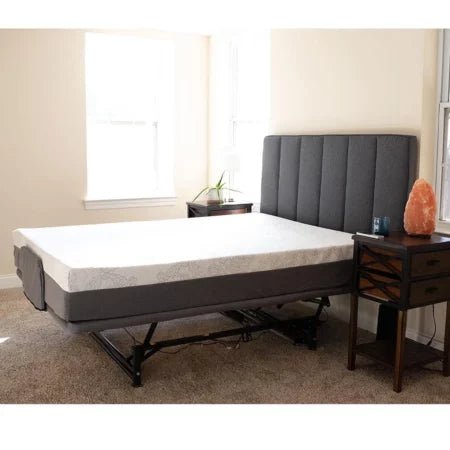Understanding Standard Hospital Bed Dimensions
Selecting the right standard hospital bed size is crucial when planning for home use. Typically, these beds measure 36 inches in width and 80 inches in length. This dimension ensures that the bed fits comfortably in most home environments while providing adequate space for patient care. For taller individuals, extended lengths are available, reaching up to 84 inches. This added length accommodates patients who may require more space without compromising comfort or functionality. When considering these variations, it's essential to measure your available space to ensure a seamless fit. Knowing these standard sizes is vital for accurate fitting. It aids in selecting compatible mattresses and linens, ensuring that all components work together harmoniously. Proper dimensions also play a role in enhancing patient safety and comfort, preventing unnecessary strain or discomfort. By understanding the various dimensions of hospital beds, you can make informed decisions that cater specifically to your needs. Whether opting for standard or extended lengths, precise measurements guarantee a better fit within your living area and contribute significantly to the patient's overall well-being at home.Factors Influencing Hospital Bed Selection
Selecting the right hospital bed for home use involves careful consideration of various factors.- Weight Capacity
- Adjustability
- Mattress Position Adjustments
Mattress Specifications for Hospital Beds
Choosing the right mattress for your hospital bed is crucial to patient comfort and health. Hospital bed mattresses are typically designed with pressure redistribution technology, which helps prevent bedsores—a common concern for patients who spend extended periods in bed. These mattresses generally measure between 6-7 inches thick, providing ample cushioning while maintaining firmness to support therapeutic needs. Properly sized linens are another consideration when setting up a hospital bed at home. Ill-fitted sheets can lead to discomfort and pose hygiene challenges. Ensuring that linens fit snugly over the mattress not only enhances comfort but also aids in maintaining cleanliness, an essential factor in preventing infections. When selecting a mattress, consider models specifically designed for hospital beds. They often feature materials that manage moisture and reduce friction, further minimizing the risk of skin irritation and pressure ulcers. Investing in a quality mattress tailored to these specifications ensures a conducive environment for healing and rest. By prioritizing these factors, you align with best practices on how to measure hospital bed dimensions for home use, ensuring both safety and comfort for the patient.Exploring Alternative Sizes and Options for Hospital Beds
When choosing a hospital bed for home use, it's vital to consider the wider options available, particularly for individuals who may require more space. Standard hospital beds typically measure 36 inches in width, but for those needing additional room, options extend up to 54 inches. This extra width is beneficial not only for patient comfort but also for accommodating caregivers during medical procedures or everyday assistance. Bariatric beds are specifically designed to support larger patients, offering enhanced comfort and safety. These beds are built with reinforced frames to handle higher weight capacities, often exceeding 1000 pounds. This makes them an excellent choice for patients with higher body mass indices (BMI) or those requiring additional equipment alongside them. A broader bed surface reduces the risk of pressure injuries by allowing more freedom of movement and better weight distribution. This advantage is crucial for patients who spend extended periods in bed, as it helps maintain skin integrity and overall health. The availability of wider hospital beds ensures that every patient's unique needs can be met while maintaining a focus on both comfort and medical care efficiency. Selecting the right size can significantly impact the quality of life and care provided at home.Preparing Your Space for a Hospital Bed at Home
When setting up a hospital bed in your home, room considerations are critical. The first step is to measure the intended space accurately before purchasing or renting a bed, such as the CS Series CS7 Bed, which features a 76" or 80" bed deck length and an auto contour body positioning system. This ensures that the bed fits comfortably within the room and allows for necessary movement around it.Key Steps for Accurate Space Measurement:
Determine Room Dimensions: Measure the length, width, and height of the room where the bed will be placed. Ensure there's sufficient space not just for the bed itself, but also for any additional medical equipment or furniture. Consider Clearance: Leave ample clearance on all sides of the bed. This is vital for both patient accessibility and caregiver mobility. Ideally, there should be enough space to move freely around all sides of the bed, facilitating easier patient transfers and routine care tasks. Account for Adjustability: Many hospital beds have adjustable features that may require extra space when extended. It's important to consider these adjustments in your measurements to avoid any spatial constraints. Plan for Additional Needs: If you're anticipating frequent visits from healthcare professionals or need to accommodate additional equipment like oxygen tanks or IV poles, factor in this space requirement as well. Understanding and planning your space with these steps ensures a comfortable and functional environment for both patients and caregivers.Assessing Patient Needs When Choosing a Hospital Bed for Home Use
Understanding patient requirements is crucial when selecting a hospital bed for home use. Evaluating specific care needs ensures that the bed provides optimal comfort and safety. Measure the patient's height to determine if a standard or extended-length bed is necessary. Consider weight capacity, particularly if additional load from caregivers or equipment will be present. Bariatric beds offer solutions for patients with higher body mass indices. Assess the patient's ability to move independently. Beds with adjustable heights (16 to 30 inches) can facilitate easier transfers, while adjustable mattress positions enhance comfort during prolonged use. Take into account any medical conditions that may influence bed choice. For instance, patients with pressure ulcers may benefit from specialized mattresses designed to prevent bedsores. Additionally, some patients may require the use of certain medical devices, such as the Amara View Full Face Mask, which can impact their positioning and comfort in bed. By addressing these factors, you ensure the selected hospital bed aligns with both safety and comfort standards, catering specifically to the patient's unique needs.Conclusion
Accurately measuring and selecting the right hospital bed is crucial for ensuring both safety and comfort in home care solutions. By paying attention to factors like dimensions, weight capacity, mattress specifications, and patient needs, you can make an informed decision that supports effective care. Carefully consider all aspects discussed in this guide on How to Measure Hospital Bed Dimensions for Home Use to find a solution that best fits your situation. Your choices play a vital role in creating a supportive and healing environment at home.FAQs (Frequently Asked Questions)
What are the standard dimensions of a hospital bed?
The standard dimensions of a hospital bed are 36 inches wide and 80 inches long. Some models offer extended lengths up to 84 inches, which is important to consider for taller patients.What factors should I consider when selecting a hospital bed for home use?
When selecting a hospital bed, consider factors such as weight capacity (ranging from 300 to over 1000 pounds), adjustable height (16 to 30 inches), and mattress position adjustments for comfort and medical needs.How do I measure the space for a hospital bed at home?
It is crucial to measure the intended space before purchasing or renting a hospital bed. Ensure there is enough clearance for movement around the bed to accommodate caregivers and equipment.What type of mattress should I use with a hospital bed?
Hospital bed mattresses should typically be between 6-7 inches thick to provide adequate pressure redistribution, which helps in preventing bedsores. Properly sized linens are also essential for comfort and hygiene.Are there options available for larger patients when choosing a hospital bed?
Yes, there are wider options available, including bariatric beds that can accommodate widths up to 54 inches. These beds are designed to provide enhanced comfort and support for larger patients.How do I assess patient needs when choosing a hospital bed?
To assess patient needs, evaluate their height, weight, mobility requirements, and any medical conditions that may affect their choice of bed. This ensures that the selected hospital bed meets safety and comfort standards.








